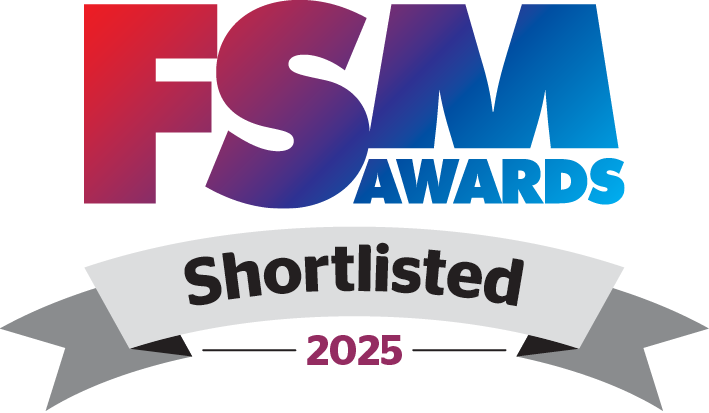10 Things Schools Need to Know About Asbestos

This blog is based on Judicium’s Health and Safety ‘Sofa Session’ from the 24th of April, with our resident expert Marta Zydel. This session focused on the current production and usage of asbestos, legislation, documentation, contractor competency and managing asbestos removal contractors on site.
Poll 1
.png)
1. Asbestos – Where does it come from?
In the UK, it has been illegal to buy, sell, import or export any materials containing asbestos since November 1999.
But asbestos is still used in some parts of the world, mainly in Asia and the Middle East.
Today, chrysotile (white asbestos) is the only asbestos fibre commercialised. 90% of the world's production of chrysotile is used in the manufacture of asbestos-cement products, such as corrugated roofing tiles, pipes, and wall panels, as well as in the production of automobile brake shoes, disk pads, clutches, and elevators.
2. Did you know these products contain Asbestos?
The most common asbestos-contaminated ingredient is talc (talcum) which is used in a range of consumer products like cosmetics, paper making, plastic, paint, and coatings (e.g. for metal casting moulds), rubber, electric cable, pharmaceuticals, and ceramics.
The most well-known talc product contaminations are Clare’s and Avon. i.e., eye shadow, Crayons, and colouring pencils. Also, Johnson & Johnson talc powder and fingerprint powder, used in spy kits for children.
Crystals and Minerals
It is important to know some minerals contain asbestos fibres as part of their natural composition. The most common are tiger eye (crocidolite), pietersite (crocidolite), infinity stone (chrysotile).
NB: It is recommended you avoid buying them in their raw form to prevent accidental fibre release during their handling.
3. Legislation
The duty of care puts an obligation on employers not to negligently expose employees to the risk of developing an asbestos-related disease. The regulations governing asbestos include:
- Control Of Asbestos Regulation (CAR) 2012 puts the duty to manage asbestos on those who manage and/or are responsible for maintenance and repairs in a non-domestic building.
- ACoP (Approved Codes of Practice) - L143 – 2013 gives practical advice on how to comply with the legal requirements of the Control of Asbestos Regulations 2012.
- HSG247: Asbestos - The Licensed Contractors' guide 2006 is a practical guide for licensed contractors regarding asbestos removal works (risk assessments, training, enclosures, stripping techniques including waste disposal, four stage clearance, and decontamination).
- HSG210: Asbestos Essentials – 2018 contains task sheets which give guidance to employers, managers and sole traders on what to do when they need to work on or near asbestos-containing materials (ACMs).
Poll 2

4. Factors Considered for Asbestos Removal
When asbestos removal is planned, first it has to be established if the job is licensed or non-licensed.
The three primary factors that must be considered first when deciding which type of removal project will be required include: friability, ACM type, and exposure during removal works.
1. Friability – the friability of asbestos indicates how easily asbestos-containing materials (ACM) will break down into smaller pieces.- The more friable the asbestos-containing material (ACM) is, the more likely it is to release fibres which can be inhaled.
- For example, some asbestos-containing materials (ACMs) such as millboards or spray coatings are often very friable and can have a concentration of up to 90%.
- However, when non-friable asbestos products are damaged or badly weathered, they may become friable (cement).
- It must be determined if the removal of asbestos can be considered ‘short duration works’ and if they are ‘sporadic and of low intensity.'
Determination of friability and ACM type will be assessed during the asbestos survey process and laboratory sample analysis. They will be listed in the risk assessment part of the asbestos survey report. Exposure is established by the asbestos removal contract manager.
5. Licensed and unlicensed asbestos removal
In general, licensed asbestos removals will cover asbestos coatings, insulting boards, millboards, spray coating, pipe lagging and asbestos contaminated debris/dust.
Usually, products which do not require a licence to be removed are asbestos cement (roof sheets, pipes, wall panels), textured coating and paints, floor tiles, bituminous, thermoplastic and rubber products. Often repair work to AIB (asbestos insulating board) or drilling holes through textured coating would not require a licence.
However, there are situations where removal works on ‘non-licensed products’ will require notification due to their condition (e.g. cement) or volume (textured coating). These works are notifiable non-licensed works (NNLW).
The school must work closely with the contractor to determine which removal works will have to be applied.
Licensed and non-licensed works have significant differences in removal methods which are reflected in the control measures applied to contain fibre release. Both methods require different control measures, equipment, time, and number of operatives to complete. There are also different requirements regarding employee training for licenced and non-licensed jobs.
NB: Licensed removal can only be performed by operatives who have completed industry-specific training.
6. Competency of contractor
CAR 2012 requires companies to hold asbestos removal licences to undertake works with licensed asbestos materials.
Compliance with regulation is assessed during the HSE license renewal process and the HSE Inspector's site visits.
HSE works closely with trade associations which often give advice along with clarification on how regulations should be applied to their members. NB: All licensed asbestos removal companies must belong to a trade association, which ensures they meet industry standards.
The two trade associations are ARCA (Asbestos Removal Contractors Association) and ACAD (Asbestos Control and Abatement Division).
ARCA assessors carry out site audits to confirm its members comply with best industry practices. Any omissions detected during audits will be recorded and improvement action is required. Unannounced audits ensure the contractor keeps a high standard of work when removal works are carried out.
In the asbestos removal industry, the most crucial part of work preparation is undertaken by the Contract Manager who visits sites and based on their findings, knowledge and experience prepares a plan of work. They should have completed the NVQ Level 4 Diploma for asbestos removal contract managers, which qualifies them for CSCS black card. It’s also beneficial if they hold a membership of the Asbestos Management Institute.
The license removal works can only be done by individuals who completed Asbestos Removal Operative/Supervisor Training. Training providers must be United Kingdom Asbestos Training Association (UKATA) approved. It’s recommended for all operatives to hold CSCS cards.
The asbestos removal contractor must only use UKAS-accredited testing laboratories for bulk sample analysis and air test checks.
For its equipment service, the contractor can only use an organisation who holds an asbestos license and its staff can provide proof of their competency.
NB: If the scaffold is part of the enclosure during license removal works, then it only can be built by an organisation which holds ancillary asbestos licenses for scaffolding.
Asbestos is classed as hazardous waste, and its transport requires a waste carrier license. The contractor must follow strict rules regarding waste transport, packaging and disposal.
Waste notes must be stored and available to view as Environmental Agency auditors can visit the premises to check if the contractor complies with carrier license requirements.
Poll 3

7. HSE Notification
The HSE must be notified of any removal works by the contracor. Notification must take place 14 days before work commences and the ASB5 form is produced.
In situations of non-license, low intensity works, the HSE notification takes place before or on the day of the removal (NNLW1).
In extreme cases, where high-risk situations must be resolved quickly the contractor can apply for Waver to HSE to fast-track removal works.
8. Documents required before the start of the project
- The contractor must provide the school with an ASB5 form as confirmation of informing HSE of future licensed asbestos works.
- The contractor prior to notification must prepare a Plan of Work and Site-Specific Risk Assessment which must be communicated to the school. Safety requirements must be stated, and necessary precautions taken.
- Before work commences, information about training and equipment must be provided to the school to show compliance with regulations regarding statutory training and equipment checks.
- Licensed jobs require contractors to ensure their workers undergo yearly asbestos removal training refreshers with approved training providers and have up-to-date medical checks. Depending on specifications of the work, additional training can be required.
- The H-type Vacuums (Vac’s) and Negative Pressure Units (NPU’s) must undergo servicing every six months and certification kept for viewing by the school. The same rule applies for gas and electric checks in Decontamination Units (DCU). In addition, a clearance air test must be available to show that DCU was clean and safe after the completion of works.
- The contractor has to be the holder of a Waste Carrier License to legally transport hazardous asbestos waste to the transfer station.
9. Managing your asbestos removal contractor on site
The school should inform the contractor about any changes on site. If there are multiple works done on the premises, asbestos should be removed first. Other works could compromise arrangements regarding establishing site control measures.
All arrangements regarding required site set-up should be completed with the contractor before removal work commence.
After completion of licensed works, the contractor must provide the school with a 4-stage clearance air test certificate to show the area where work has been carried out is ready for reoccupation.
A waste consignment note is issued by the waste transfer station which confirms the asbestos-containing material was disposed of safely according to current legislation. The waste note should be kept in school records.
10. What your school should have in place
- Asbestos Management survey in place (if required)
- Survey reviewed (if required)
- Asbestos management policy
- Asbestos Management Plan
- Asbestos register in place
- Signing sheet attached to register for contractors.
- Adhering to the recommendations of the survey
- Documented periodic condition monitoring inspections.
- Demolition survey for any works carried out.
- Asbestos awareness training completed.
- Asbestos awareness training refreshed (annually)
Additional Information
The Health and Safety Service is also providing accredited training courses, including eLearning with specific modules ranging from courses designed for premises managers and SLT to all staff offerings and fire warden training: https://www.judiciumeducation.co.uk/elearning
We also offer live, exclusive training options: https://www.judiciumeducation.co.uk/training
To review Judicium’s forthcoming sofa sessions please click here.
Follow us on Twitter - @JudiciumEDU
© This content is the exclusive property of Judicium Education. The works are intended to provide an overview of the sofa session you attend and/or to be a learning aid to assist you and your school. However, any redistribution or reproduction of part or all of the contents in any form is prohibited. You may not, except with our express written permission, distribute or exploit the content. Failure to follow this guidance may result in Judicium either preventing you with access to our sessions and/or follow up content.
Related content
.png)
This blog is based on Judicium’s Health & Safety and SEND session on 26th November with resident expert India Cottenden
.png)
This blog is based on Judicium’s Food Safety Sofa session on 12th November with resident experts Sue Roberts and Tracey Killick

This blog is based on Judicium’s Health and Safety ‘Sofa Session’ on the 15th of October, with our resident expert Mike Wright.

This prestigious award celebrates our commitment to delivering expert, education-specific Health & Safety support that lifts the burden for school teams while raising safety standards across the sector.

This blog is based on Judicium’s Health and Safety ‘Sofa Session’ from 18th June, led by resident expert , Mike Wright, CMIOSH. This session focuses on the control of substances hazardous to health (COSHH) and their relevance in school settings, how assessments should be undertaken and what staff could be at risk.

Discover why Judicium has been shortlisted for Fire Safety Consultancy of the Year at the 2025 FSM Awards, recognising our expert support for schools and trusts in delivering sector-specific, compliant, and practical fire safety solutions.

Sofa Sessions | H&S